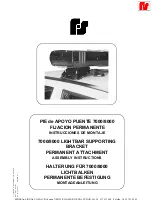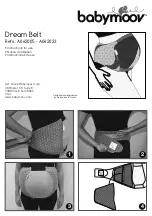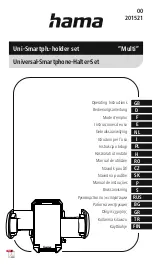
D12 Expert Series
page
6
D12 Expert Hookups
NPN (Sinking) Outputs
PNP (Sourcing) Outputs
10-30V dc
bn
bu
gy
-
+
bk
wh
Alarm
Load
Remote programming switch
(normally open)
(normally open)
10-30V dc
bu
bn
gy
-
+
bk
wh
Alarm
Load
Remote programming switch
(normally open)
(normally open)
RUN Mode
Normal operation of the D12 Expert is called RUN mode. During RUN mode, the 7-
segment LED display becomes a moving dot signal strength indicator (see Figure 1).
When the light and dark sensing conditions are analyzed by the sensor during TEACH
mode, the sensor’s microprocessor automatically distributes the range of signal
strength seen in the light condition evenly between the 7 LEDs. This display gives a
true reading of the relative signal strength for the current application, and is a useful
indicator of changing sensing conditions.
Maximum Sensitivity
D12 Expert sensors are factory set for maximum sensitivity. Use the following TEACH
mode procedure at any time to return the sensitivity to its maximum setting.
Following the TEACH mode procedure on page 8, teach the following two conditions:
1. No light reaching the receiver. One easy way to do this is to disconnect the
emitter and/or receiver fiber at the sensor.
2. Maximum light reaching the receiver. The best way to do this is to pipe the
light from the sensor’s emitter port directly into the receiver port, using a short
individual fiber. If this is not convenient, then return the greatest amount of light
possible to the receiver by using a reflective target at close range (diffuse mode
sensing) or by bringing the sensing end tips together (opposed mode sensing).
Factory Default Settings
D12E and D12E2 sensors are factory set at the following defaults: maximum
sensitivity, light operate output and pulse stretcher OFF.
Perform the procedures on the following pages to program your own settings. Unlike
competitive sensors, the D12E has no exposed switches or adjustments.
Running and Programming the D12 Expert






























